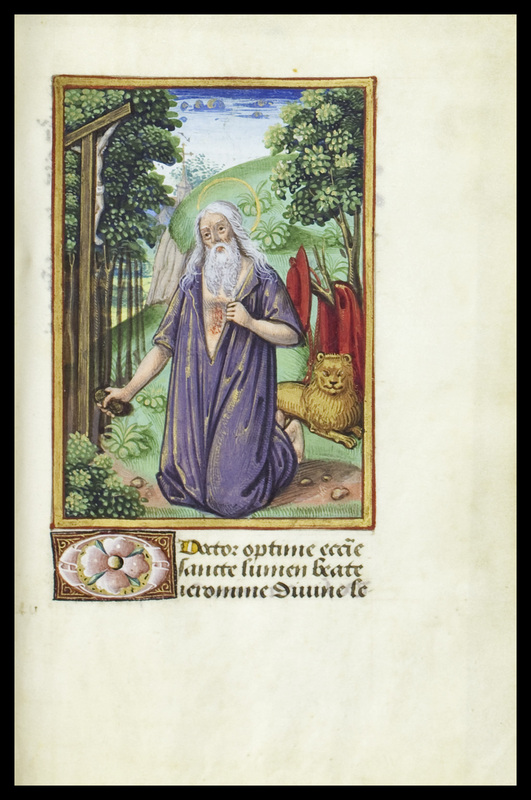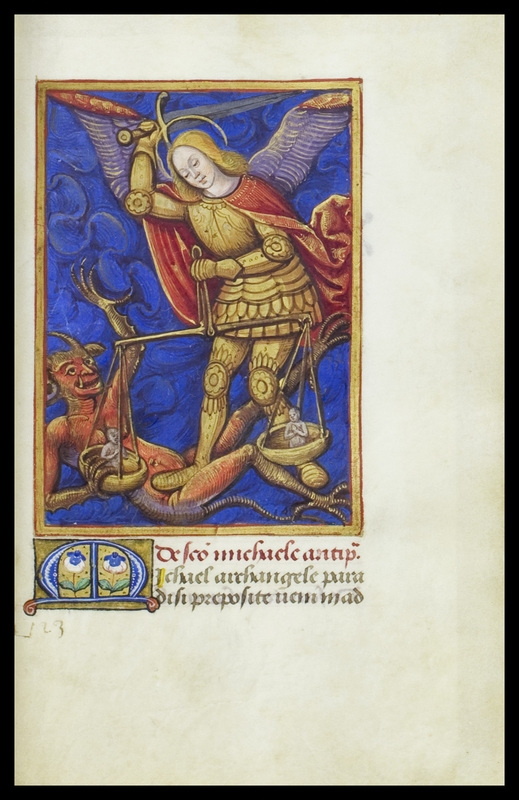St. Margaret
For instance, St. Margaret, who is depicted with a dragon. When in prison for professing her faith, a dragon devoured her; but at the sign of the cross the dragon split open. From these circumstances, St. Margaret was sought as a helper in childbirth.
St. Apollonia
St. Apollonia, a seemingly obscure saint from the early church, had her teeth removed as torture for her profession of faith. Thus she became an intercessor for those with toothaches and the patron saint of dentists.
St. George and the dragon
St. George slays the dragon as the princess, daughter to the king of Lybia (various traditions place them in different locales), watches from the distance. The dragon represents evil in general or specifically paganism. The princess personifies the heathen country, soon to be converted by George's victory. St. George was one of the more popular saints in medieval times and frequently appears in religious art.
St. Mary Magdalene
Commonly Mary Magdalene can be identified by her ointment jar (from when she anointed Christ's feet). Here she is shown in the wilderness; according to the Golden Legend, she spent 30 years in the wilderness as a hermit. Angels carry her soul up to heaven at each of the canonical hours for her to hear the heavenly choirs.
St. Jerome and the lion
The translator of the Scriptures into Latin appears here as a hermit. He is usually accompanied by a lion. Jerome befriended the lion by removing a thorn from the lion's paw; thus the lion followed him in servitude and became his constant companion. His red clerical garments hang in the background. Jerome meditates upon the crucifix (seen to the left), which shows his devotion. To mortify the passions of this world and focus on eternal life, Jerome beats his chest in penitence.
Archangel Michael on Judgment Day
Michael is patron saint of the church militant (the church on earth, in contrast to the church triumphant, the heavenly church). Michael holds the scales that weigh souls on Judgment Day. Dressed in military armor and with a sword (the wings distinguish him as an angel, so as not to confuse him with other monster-slayers such as St. George), Michael vanquishes the devil. His slaying of the devil represents the overcoming of evil, and this battle also reflects the battle between Christ and Antichrist.
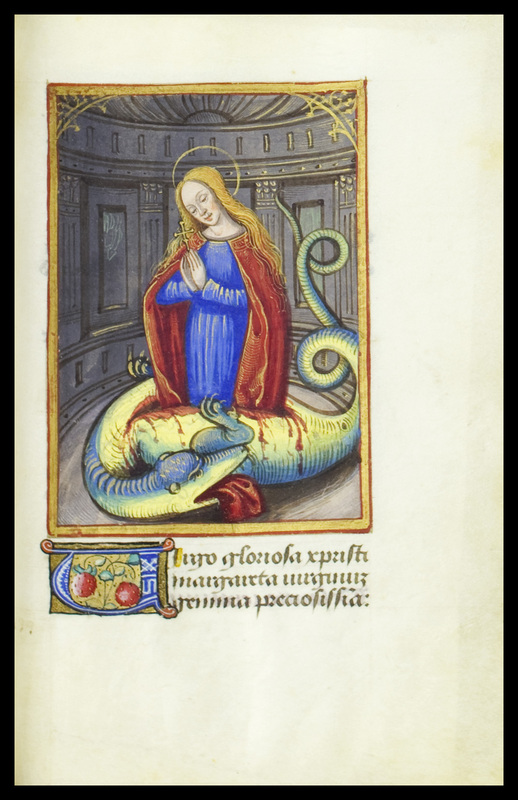
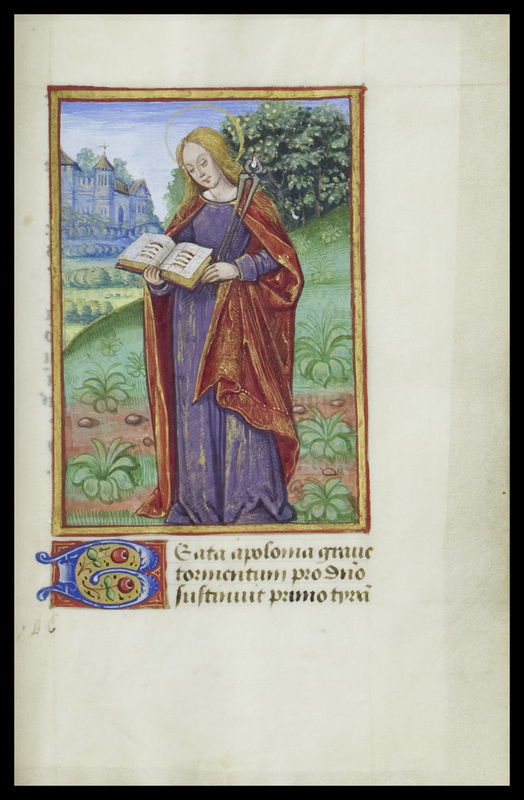
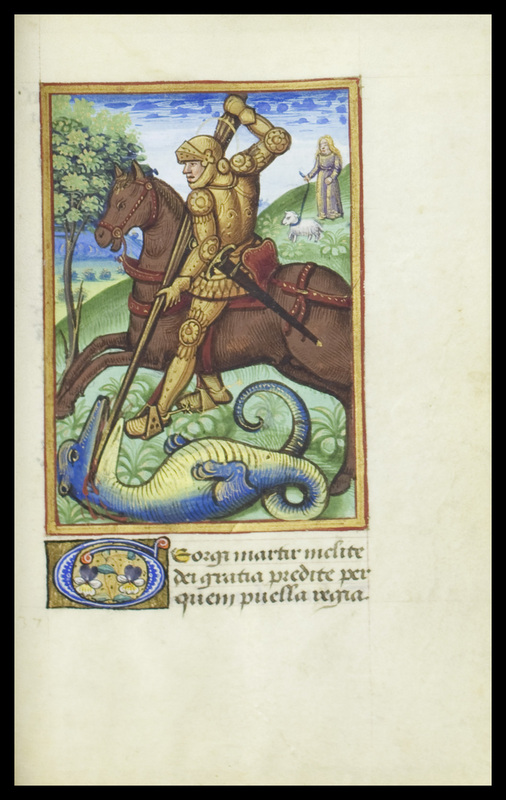
![Incipiu[n]t quindeci[m] or[aci]ones scdz passio ... Incipiu[n]t quindeci[m] or[aci]ones scdz passio ...](http://omeka.wustl.edu/omeka/files/fullsize/82002298b6929cd8168034edea225349.jpg)
